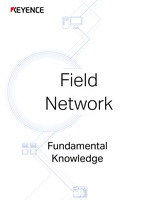SERCOS II
This section explains SERCOS II.
Overview
SERCOS II is an open network jointly developed by European machinery manufacturers in 1986. It is managed by a German organization, Sercos International (SI). With highly efficient communication achieved by effectively using the communication band, 40 axes can be synchronized in a cycle of 1 ms and synchronous timing jitter among slaves is less than 1 μs. High synchronization performance is guaranteed based on hardware, which allows this network to be used for highly accurate control such as motion control.
Wiring Method and Communication Protocol
Wiring method
Devices are connected and communicate over a ring topology using optical fibers. The highest transmission speed is 16 Mbps. Noise immunity is high because optical fiber cables are used for transmission. Up to 254 slaves can be connected to one master and the transmission distance between slaves can be extended up to 250 m (820.2′) (when an optical fiber cable is used).
Importance is placed on synchronousness among slaves, so the timing of all axes can be synchronized with jitter of 1 μs of less. Ring topology is used, allowing for data transmission in the opposite direction when a cable is disconnected in a network.

Communication protocol
In a SERCOS II network, all slaves simultaneously receive a message containing a command, which is called a master synchronization telegram (MST), and then simultaneously receive a master data telegram (MDT). The MDT contains cycle data. Slaves send an acknowledge telegram (AT) in a sequence order based on that cycle data and the master acquires slave information.

The cycle information is shared via MDT.
Characteristics
SERCOS II sends and receives data using the master/slave method. It supports cyclic communication which is performed in a fixed cycle, and prevents data collision by simultaneously sending a message to all slaves and sending data from slaves at adjusted timing.
Related Networks
SERCOS III
This network can be wired based on 100 Mbps Ethernet.
- Company, product, and network names mentioned on this page are either trademarks or registered trademarks of their respective companies.
- Note that some information, such as applicable standards and specifications, may have changed since this page was published.
November 2015






